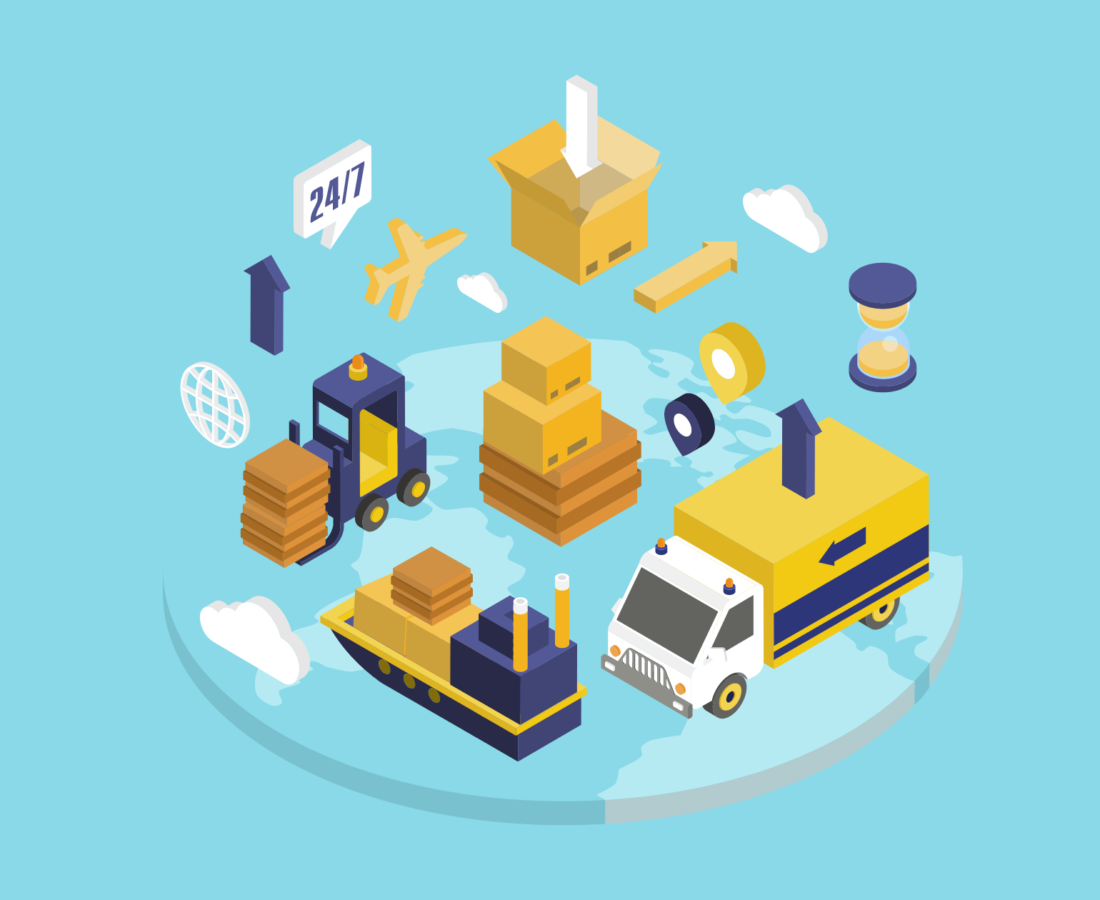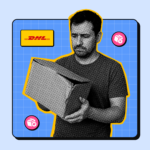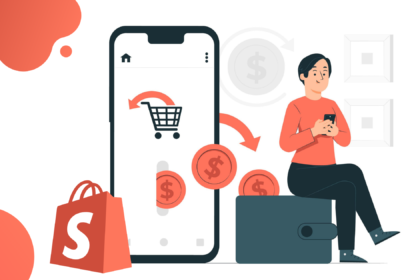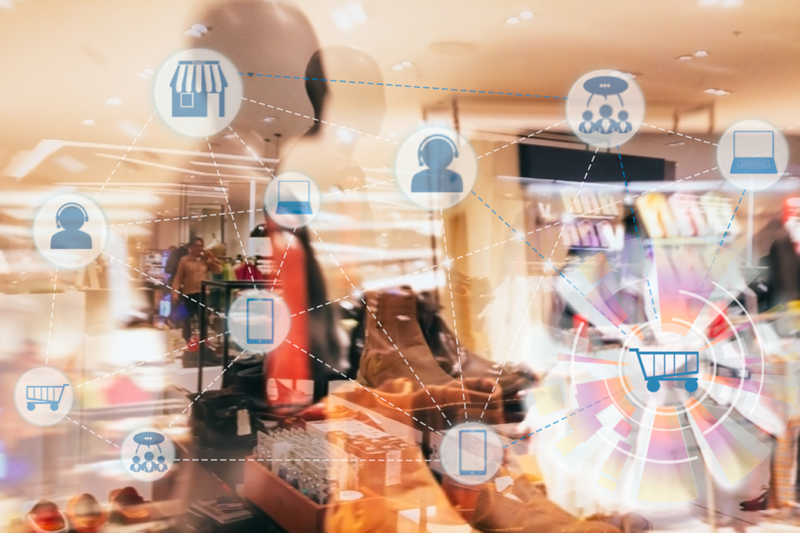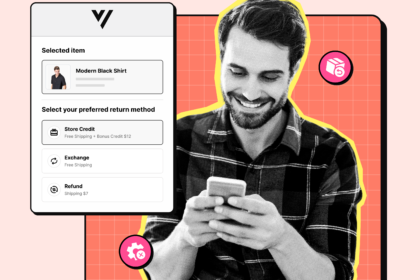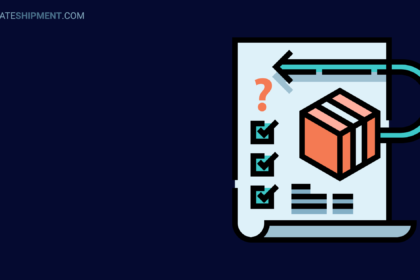Logistics is the process of planning, implementing, and controlling the efficient, cost-effective flow of raw materials, in-process inventory, finished goods, and related information from the point of origin to the point of consumption to conform to customer requirements. Reverse logistics includes all these activities, but in the reverse order.
Think of it as the boomerang effect of e-commerce. A customer orders a pair of shoes, but they don’t fit quite right. So, back they go!
But why does it matter so much?
You see, for e-commerce businesses, managing this return journey efficiently is just as crucial as delivering orders in the first place. Seamless reverse logistics equals happy customers and low costs. But if you get it wrong, your precious loyal customer can turn into a one-time buyer real quick.
In this guide, we’ll explain reverse logistics, its key stages, and how you can master it to keep your operations smooth and customers coming back for more. Let’s dive in!
What is Reverse Logistics?
Reverse logistics is defined as the process of planning, implementing, and controlling the efficient, cost-effective flow of raw materials, in-process inventory, finished goods, and related information from the point of consumption to the point of origin to recapture value or dispose of the product.
Reverse logistics also includes reusing containers and recycling packaging materials. Redesigning packaging with less packaging material and reducing the energy and pollution from all transportation are important activities. Other activities include processing returned merchandise due to damage, seasonal inventory, restocking, salvage, recalls, excess inventory, recycling programs, hazardous material programs, obsolete equipment disposition, and asset recovery. This also helps get your business on the eco-friendly track.
Types of Reverse Logistics
Not all returns are created equal. Sometimes, a customer sends back a product because it’s defective. Other times, they just changed their mind (we’ve all been there). Then there are cases where items aren’t coming back from customers at all—think unsold inventory getting shipped back to suppliers. The point? Reverse logistics isn’t a one-size-fits-all process. It has different types depending on why a product is making its way back. Let’s take a closer look at them.
1. Returns Management
This includes the end-to-end management of product returns, regardless of the reason—be it customer dissatisfaction, defects, or incorrect orders. Remember, managing returns isn’t just about taking back unwanted products. You must make the process smooth, cost-effective, and even preventable where possible.
Why? Because customers expect easy, no-hassle returns. If you fail to meet this expectation, you risk losing future sales.
Take Zappos, for example. The shoe retailer offers a wide 365-day window to process free returns. That’s crazy! In fact, when a customer tried to exchange a product, not only did they get a $35 discount because of the price drop, but they were also upgraded to the lifetime VIP status for free. The verdict? A first-time buyer who turned into a lifelong customer. All because the company went a step ahead with its returns management.
2. Return Policy and Procedure (RPP)
As the name suggests, these are the guidelines you share with your customers regarding returns, exchanges, and refunds. A clear, well-communicated RPP prevents the risk of disputes and protects you against fraud.
But that’s not all.
A clear, visible, and customer-friendly return policy can actually increase conversions. For instance, Amazon’s return policy is incredibly lenient, allowing customers to return most items within 30 days with no questions asked. It reduces purchase hesitation, increasing overall order volume.
But it’s important to tread with caution, as being too lenient also comes with the risk of abuse. In fact, return fraud costs retailers over $24 billion annually in the U.S. alone. As such, it’s important to strike a balance—offer a fair policy but put safeguards in place, like requiring receipts or limiting high-value item returns.
3. Remanufacturing or Refurbishment
This type of reverse logistics involves repairing, rebuilding, or restoring returned or used products to a like-new condition. It helps reduce waste and recover value from products that might otherwise be discarded.
Companies like Apple and Dell have mastered this by selling certified refurbished products at a discount, giving them a second life. Remanufacturing also extends to industries beyond electronics. For example, Boeing offers refurbished airplane parts at cost-effective prices for commercial and military needs.
It kills two birds with one stone: it promotes sustainability and helps you create a new revenue stream.
4. Packaging Management
Ever wondered what happens to all those boxes and bubble wraps after a return? Packaging management ensures these materials don’t just end up in a landfill. It focuses on reusing, recycling, or minimizing packaging waste.
For example, companies like ASOS dropped the production of return slips and shifted to managing returns online instead. Returns also make it easy for customers to return or exchange stuff they bought online without having to print labels, helping companies ditch 40 or more unnecessary cardboard boxes and poly mailer bags.
Plus, as more and more consumers are actively choosing eco-conscious brands, this can help you improve your brand image and do your part in helping the planet.
5. Unsold Goods
Not all returns come from customers—sometimes, you might have to send back unsold inventory due to poor demand, product expiration, or excess stock. Managing their returns efficiently can prevent financial losses and minimize waste.
For example, fast fashion brands like H&M only sell about 60% of their clothes without a markdown. H&M says it repurposes 24% of these clothes and disposes of 8%, prioritizing incineration to recover energy.
You can also manage unsold inventory by:
- Offering deep discounts to create a purchase appeal
- Bundling them with other products to create a package deal
- Repurposing them by identifying alternative uses
- Running clearance sales
6. End-of-Life (EOL) Products
When a product reaches the end of its lifecycle—whether due to wear and tear or obsolescence—it doesn’t necessarily belong in the trash. Many companies have take-back programs to recycle or repurpose materials.
For example, Apple’s “Trade-In” program lets customers return old devices for credit or recycling. Similarly, Patagonia encourages customers to return worn-out clothes through their “Worn Wear” program, which upcycles then into new products.
Managing EOL products effectively not only reduces waste but also saves you significant money on raw materials while keeping customers engaged with sustainability initiatives.
7. Delivery Failure
Let’s face it: not every package makes it to its destination. Whether it’s due to incorrect addresses, failed delivery attempts, or customer refusals, failed deliveries create logistical nightmares.
But they’re also inevitable. Hence, the products need to be sent back to a sorting facility. Therefore, e-commerce businesses must have a solid delivery failure management process in place to reduce losses and maximize redelivery attempts.
Here are some practical ways to manage failed delivery returns efficiently:
- Give your customers multiple delivery options, such as scheduling a convenient delivery time, choosing a delivery window, or rerouting their package to a local pickup point.
- Let them track their shipments in real time, so they can plan for delivery.
- Use automated systems to allow customers to reschedule failed deliveries or redirect their packages to a pickup point without having to contact customer support.
- Clearly communicate your return and rescheduling policies upfront.
- In case of a delivery failure, offer incentives for customers to pick up their packages from a nearby pickup point.
8. Rentals and Leasing
Companies that rent or lease products—whether it’s cars, equipment, or electronics—need a streamlined process for returns, inspections, and redistributions.
For instance, Tesla’s leased vehicles go through a refurbishment process before being resold as certified pre-owned models, extending their life cycle and maximizing value. Similarly, camera rental companies refurbish returned gear before renting it out again.
The key to success? A solid refurbishment plan that keeps leased items in circulation longer, reducing waste and maximizing revenue.
9. Repairs and Maintenance
This type typically involves servicing, fixing, or upgrading products instead of discarding them. This helps companies extend product life and reduce costs.
Think about AppleCare or Samsung’s repair programs—instead of sending customers brand-new replacements, they fix broken devices and return them. This saves the company money, reduces e-waste, and keeps customers happy.
Even industries like automotive thrive on repairs. Companies like Toyota and Ford invest heavily in parts refurbishment to keep vehicles on the road longer.
5 Stages of Reverse Logistics
Let’s break down the 5 stages of reverse logistics—the behind-the-scenes magic that makes eCommerce returns look easy:
1. Process the Return
The real work starts when your customer decides to send something back. You need a streamlined return system to minimize confusion and ensure consistency. Start by clearly defining steps like:
- Verifying the return request
- Issuing return labels
- Setting expectations around timelines
For example, suppose a customer returns a pair of pants because they ordered the wrong size. Once the return request is made, you should automatically generate a return label, send it to the customer, and track the product’s movement back to your warehouse. The sooner the return gets processed, the faster you can move to repairs, reselling, or recycling.
2. Determine the Return Category
At this stage, the product is back at the warehouse. Now, it’s time to inspect and categorize it based on its condition. Remember, not all returns are the same—some can be repaired, others may be resold, and some might need to be disposed of.
In the case of the pants, they are unused and still in new condition, but the customer has selected “wrong size” as the reason for return. So you can categorize them as “like new” since they are eligible for resale. However, if the customer had worn the pants, and they were damaged, you might have to classify them as “used” and send them for repairs or cleaning.
3. Move Products to Reduce Waste
Once you’ve categorized the products, the next step is to transfer them to the right departments to prevent holding up inventory. The faster you move these products, the less waste your business generates.
For example, if the pants are in good condition, you can immediately move them to the resell section. This reduces the time they might spend in the warehouse, eliminating unnecessary storage costs. Similarly, if the pants have been damaged, they should be moved quickly to the repair department for stitching.
4. Execute the Repair Process
This stage focuses on returned products that have the potential to be repaired. If you think a product can be fixed and resold, make sure to get it repaired immediately so it can return to the inventory as soon as possible.
Let’s assume, in this case, the pants were returned due to the wrong size and are in perfect condition, so no repairs are necessary. But if there was damage, they should be sent to the repair department so they can be mended properly and sent back to inventory.
5. Recycle Items That Cannot Be Repaired or Resold
As disappointing as it may be, some returned products may be past repairs. And when this happens, the last stage is to resell them. But make sure to be environmentally responsible.
For example, say the returned pants were damaged beyond repair. They might be stained badly, or the fabric was torn beyond salvage. In this case, you’d need to take them apart for recycling. You can re
Key Components of Reverse Logistics
Reverse logistics could be a whole function in itself. There’s a lot more happening behind the scenes than just taking back returned products. You need to handle these returns with care from the moment they leave the customer’s doorstep to the point where they either find a second life or are disposed of responsibly. Here are the key components that make the process run:
1. Transportation
The first step in reverse logistics is moving the product back from the customer to the business. But this isn’t as simple as picking up a package from a doorstep. Depending on the size of your business and the product, you might have to consider different transportation routes.
For example, smaller items might be picked up by a delivery agent, while larger items may need special shipping arrangements. It’s important to ensure the transportation process is as efficient as possible to reduce unnecessary carbon footprints and costs.
2. Warehousing
Once the product arrives at the warehouse, it’s not immediately ready for resale or disposal. You need to store them carefully until the next steps are clear. This is where warehousing comes into play.
You need to store the returned products in a way that makes it easy for warehouse staff to sort, inspect, and move them to the next stage quickly. A simple way to do this is by implementing smart warehousing techniques like automated sorting or tracking systems. They ensure products don’t linger in storage longer than needed, tying up valuable space.
3. Processing
No matter how hard you wish, processing a return isn’t as easy as simply putting a product back on the shelf. It needs a thorough inspection to decide what needs to be done next.
- How’s the product holding up?
- Is it still functional?
- Is it worth repairing, or should it be sent to recycling?
These inspections depend on factors like the product’s condition, cost of repair, demand, and if it’s still under warranty.
4. Data Analysis
Data is often the most overlooked component of reverse logistics. By analyzing data from returns, you can identify trends and pain points that affect your bottom line.
For example, are customers returning products due to poor sizing information? Are items breaking more often than they should? Data analysis can highlight why returns happen in the first place and how you can prevent them.
It also helps you spot inefficiencies in the process and optimize it to reduce costs and boost customer satisfaction.
Benefits of Implementing Reverse Logistics
Implementing reverse logistics correctly offers some major benefits across the board, from improving your bottom line to earning you customer loyalty. Let’s take a look at some key benefits:
1. Good for the Environment
The world is getting more eco-conscious by the day, and customers care about sustainability. With reverse logistics, the products that come back to you can often be refurbished, recycled, or repurposed. This is a big win for the planet.
2. Better Inventory Management
Managing returns properly gives you more control over your stock. When products are returned, you can inspect, categorize, and handle them based on their condition. This keeps your inventory more organized, giving you better insight into what you actually have in stock versus what’s been returned.
3. Enhanced Customer Service
One of the most obvious benefits of reverse logistics? Better customer service. While returns are inevitable, how you handle them can really shape your relationship with a customer. When you have a well-managed reverse logistics system, customers can send back products quickly and easily, with minimal hassle. This makes them feel valued, which, in turn, increases the likelihood that they’ll stick with your brand.
4. Cost Reduction
Reverse logistics can offer significant cost savings, especially when it comes to packaging.
- You can reuse packaging materials or recycle them to create new materials, reducing the need to purchase fresh packaging supplies.
- You can also save money on product manufacturing by repairing returned items or refurbishing them for resale.
5. Good Brand Reputation
Modern customers expect not only top-quality products but also top-tier customer service, and returns are a big part of that. A seamless returns process, recycling initiatives, and eco-friendly policies show your business cares not just about profits but about making a positive impact on the planet.
6. Increased Customer Retention
If you have a hassle-free return experience, customers are more likely to return to your store, even if they have to send something back. When customers know that returning a product is easy and that they’ll be treated well, they’ll feel more secure in their decision to shop with you in the future.
Challenges in Reverse Logistics
Sure, reverse logistics adds a ton of value to your business. However, it doesn’t come without its hurdles. Here are some key challenges you should prepare for:
1. Bi-Directional Flow
With regular logistics, items are moving from you to your customer, but in reverse logistics, that flow is going both ways. Once a customer returns a product, you need to have the infrastructure in place to handle it. This means having systems, software, and processes that can track every step of the return.
2. Cost
Let’s talk dollars and cents. Reverse logistics can be costly, especially if you’re a small business. The cost of transporting returns, inspecting items, processing them, and even restocking or repackaging is not small. Therefore, it’s important to automate parts of the process and optimize transportation routes to lower expenses.
3. Customer Expectations
When it comes to returns, e-commerce customers expect a fast, hassle-free experience. You need to ensure your reverse logistics system delivers on customer expectations. That means clear, simple returns policies, quick processing times, and easy-to-navigate instructions. Any holdup in even one of these can cost you your customers.
4. Environmental Impact
Returns can have a significant environmental impact, especially in terms of carbon emissions. Think about it, items have to be shipped back, processed, sometimes re-shipped, and if they’re not reused or recycled, they end up in a landfill. So, consider adopting more sustainable practices to reduce your carbon footprint. It’s good for the environment, can make your customers happy, and can strengthen your brand image.
Wrapping Up
Reverse logistics may come with its fair share of challenges, but with the right approach, you can turn a costly operational burden into a competitive advantage. And by the right approach, we mean investing in technology and automation.
This is where LateShipment.com’s Return Experience Management software comes in. Here’s how it helps you simplify your returns process:
- Branded Return and Exchange Portal: A self-serve, customer-friendly interface that enforces smart return policies and generates instant shipping labels.
- Automated Return Tracking and Notifications: Keeps customers informed via proactive updates and real-time return status lookups.
- Smart Revenue Retention: Encourages exchanges and store credits to turn returns into repeat purchases.
- Automated Return Policies and Workflows: Customizable rules and automated label generation to streamline return processing.
- Returns Intelligence and Insights: Provides valuable data on return trends, costs, and customer satisfaction to optimize operations.
The bottom line? Returns don’t have to be a headache. With the right tools in place, they can help drive customer retention and revenue growth.
